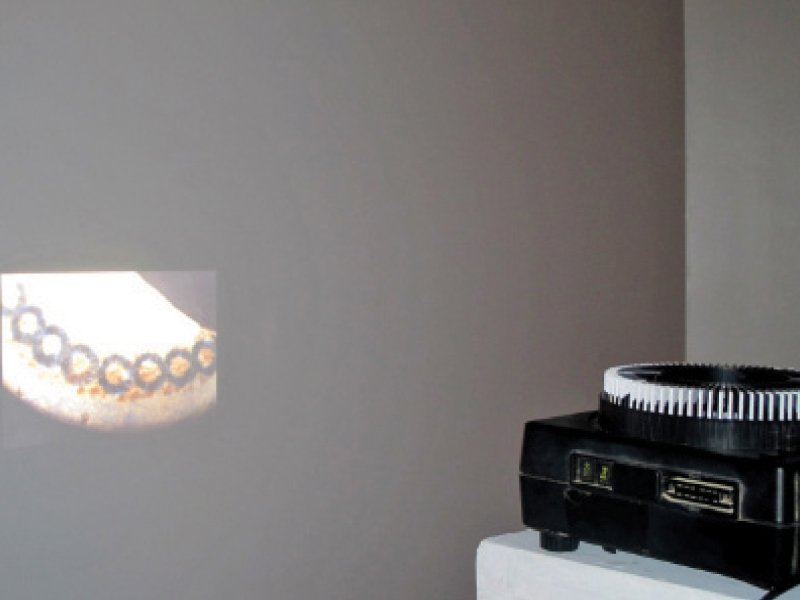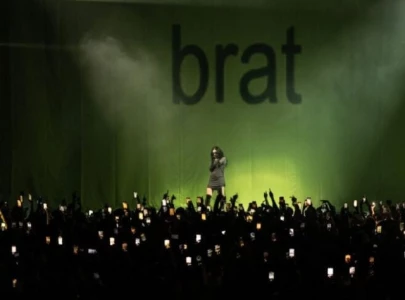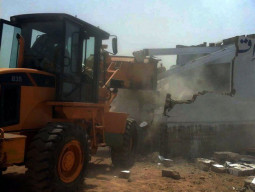
Sajjad Ahmed from Lahore and Sonya Schonberger from Berlin, Germany, are displaying their artworks at IVS gallery till February 10. The exhibition is titled ‘Tracing the Void’.
War, conflict and their effects are the underlying themes of the show. The world’s leaders got involved in the First World War to reach a conclusion; however, it was shortly followed by the Second World War. The world is still suffering from the effects of the last war. Every time we engage ourselves in a war to reach a solution, the effects of it end up getting us entangled in yet another web of problems.
Interestingly, both the artists belong to countries that were affected by World War II.
One of the countries saw the collapse of a repressive regime while the other was born after the War. They seem to have focused on their ‘individual histories and indirect connections’, as the press release states.
The baggage of history is a recurring motif in Schonberger’s works. One of her installations depicts the horrors of the aftermath of war. However, her works are not crude. She uses symbols like broken crockery and other shattered objects to affect her viewer. Though subtle, this effect is powerful as the viewer embarks upon a journey to make a personal connection with history. Memories of tragedies flash back - these include the ones that we have worked for years to push to the back of our minds.
The images being projected on the wall change every five seconds. All of them are unique, yet share the similar trait of being broken. While the images bring the tragic memories to our minds, they also make us appreciate what we have. After all, the harsh truth is that we cherish the value of life when we see someone dying. The coexistence and interdependence of joy and sorrow reverberate in the artist’s work and remind you of John Keats’ verse:
Ay, in the very temple of Delight/ Veil’d Melancholy has her sovran shrine
Dependent on each other, joy and sorrow coexist. However, they can never be one. The idea of two opposite concepts running parallel is shared by both the artists in their works. Ahmed’s large installation depicting a curtain and a scene behind it was very engaging. It was particularly interesting because the curtain depicted Italian artist Raphael’s painting Scuola di Atene [The School of Athens], which, some believe, aims at showing harmony between pagan philosophy and Christian theology. Behind this curtain is a video clip that shows a crowd of ordinary people. Interestingly, the video scene and the curtain have a grill in between which gives the illusion of a window at first glance. However, a closer look explains how it serves as a barrier between the past (the curtain) and the present (the video clip).
The similarity between the illustrations on the curtain and the video clip is obvious: the coexistence of different people. Activity, that sometimes takes the form of chaos, defines the images. However, despite the similarity, the two cannot be one. The grill in between the two is burning and red. The effect of this grill is strong as it seems invincible.
Furthermore, the artwork looks like a comment on how religious difference have been used and manipulated since ages to create conflicts in the world. During the Renaissance era, it was paganism and the Christian faith. Today, the religions might have changed but the conflict and its mechanism remains the same.
The question about history repeats itself: have we really moved on?
Published in The Express Tribune, February 8th, 2015.




1719660634-1/BeFunky-collage-nicole-(1)1719660634-1-165x106.webp)












COMMENTS
Comments are moderated and generally will be posted if they are on-topic and not abusive.
For more information, please see our Comments FAQ